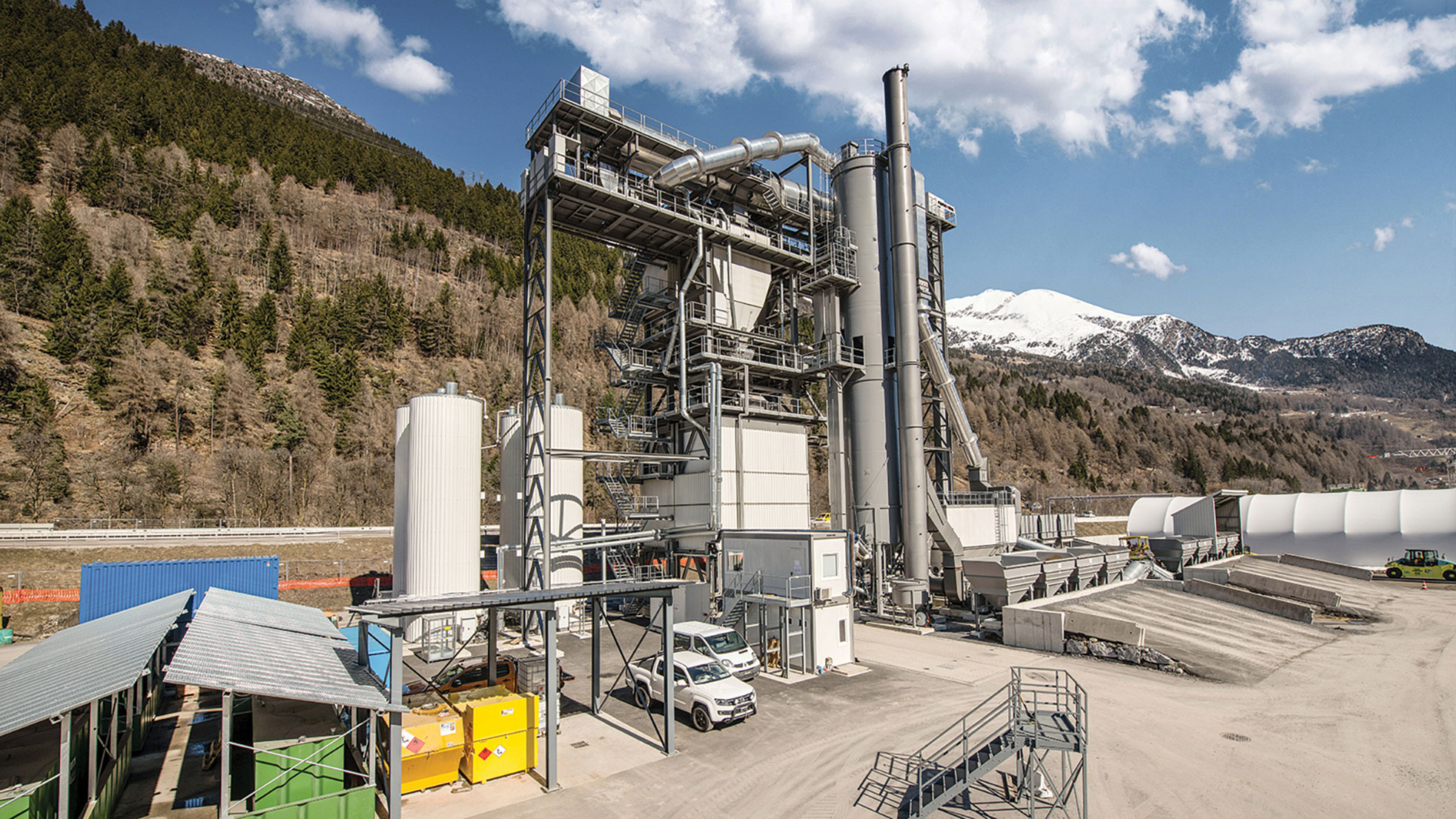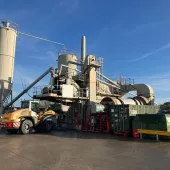Ammann Asphalt Equipment Used to Renovate Swiss Motorway

First published in the January 2021 issue of Quarry Management as Taking a Creative Approach
Renovating a section of the Swiss N2 Motorway required an unconventional approach to maximize on-site recycling
The N2 motorway is the north-south connection from Basel to Chiasso. South of the well-known Gotthard Road tunnel, a 10km, four-lane section of motorway is currently undergoing a complete renovation that will be completed in 2022. The total cost of the project is CHF250 million (€236 million).
The existing road base consists of material created during the excavation of the Gotthard tunnel. That aggregate has a fine-grain content of more than 8% and is therefore not frost-resistant. In addition, the existing asphalt structure required reinforcement to handle today’s heavy loads.
The current project includes many nods toward sustainability. The aim of the Federal Roads Office (Astra), the project’s owner and builder, is to ensure that the existing materials can be processed on site and reused in the new mix. The use and transportation of materials was a key consideration during project planning.
Enormous masses and distances
Planners calculated the following quantities of materials would be required for rebuilding the N2 section:
- 55,000 tonnes of gravel
- 119,000 tonnes of reclaimed asphalt from the construction site
- 21,000 tonnes of reclaimed asphalt from other construction sites
- 256,000 tonnes of asphalt for placement.
These material quantities would require 25,000 truck journeys. That was itself a substantial number, and it became more problematic considering that a high-performance asphalt recycling plant was required – and the nearest such operation was 70km from the job site. Travelling between this plant the job site would have created some vast numbers. For example, 25,000 truck journeys of 70km would be equivalent to approximately 50 trips around the circumference of the Earth.
Distance was not the only challenge. The trucks would have to travel to the job site either via the motorway itself or the cantonal (local) road, but each posed problems. The motorway has such high traffic volumes, even without construction, that traffic jams are a frequent occurrence, especially on summer days. The passage of the asphalt delivery trucks would, therefore, not be guaranteed and cycles impossible to calculate.
Use of the cantonal road had its own issues too. The road runs through the villages in the narrow Leventina valley and the 25,000 truck journeys would have caused noise, congestion and safety problems, not to mention damage to the road.
On-site solution
For all these reasons, an area next to the motorway was provided for asphalt preparation and production. The space included an old military airfield for the installation of an asphalt crushing plant, an asphalt-mixing plant and a gravel washing plant with sludge press. In addition, a temporary entrance and exit to the motorway, and thus to the construction site, was constructed to reduce transport routes.
The construction work, including these temporary installations, was put out to tender with the condition that required recycling percentages for the asphalt pavement would be met. In addition, the plants could only produce material from that specific site for the N2 project. After its completion, the plants must be dismantled and the site restored to its original condition.
Structure for the future load
The new asphalt pavement structure consists of the following layers and required percentages of recycled materials:
- 3cm SDA 8-12 (semi-dense rolled asphalt) with 0% recycled asphalt
- 8cm AC B 22 H (binder course) with 50% recycled asphalt
- 8cm AC T 22 H (basecourse) with 50% finishing asphalt
- 11cm AC F 22 (bitumen-bound foundation layer) with 90% finishing asphalt
- 11cm AC F 22 (bitumen-bound foundation layer) with 90% finishing asphalt
- 5cm thick seal on a 33cm frost-protection layer.
The target bitumen of the individual recycled pavements were determined, as were the bitumen additions:
- AC B and T 22 H: PmB 45/80-65, addition bitumen PmB 90/150-85
- AC F 22: B 30-55, addition bitumen 330/430
- And in all cases, no rejuvenating agents.
In total, around 250,000 tonnes of asphalt will be produced for this project, proving that it is possible to utilize very high percentages of recycled materials without having to accept rejuvenation agents and quality losses. It also shows that bituminous-bound foundation layers can be produced with almost 100% asphalt.
Getting started
The production site was created in spring 2018, with the installation of the plants beginning the following August. The asphalt-mixing plant was ready for operation after four months. It was able to supply mix for the construction site in May 2019 – after the approval of the test pavements.
First paving results
In 2019, about 80% of the pavement in the central portion of the motorway section was laid. The first efforts showed good quality across all the layers. Adjustments have to be made when milling the existing asphalt layers and when subsequently crushing the milled material to ensure that the grain curve of the recycled asphalt is not excessively fine.
In addition, the quality of the binder to be added to the AC B and H pavements is very important and requires a great deal of attention. The penetration of this polymer-modified binder must not vary too much and must never fall below the lower value of 90 1/10mm.
In 2020, the pavements were laid on the two lanes and the hard shoulder in a south-north direction. In 2021 it will be in a north-south direction so that the rehabilitation can be completed by the end of the year. Residual work, such as the erection of noise barriers, will occur in the following year.
Mix production on site
Ammann supplied the asphalt-mixing plant, which will produce a total of 250,000 tonnes of asphalt on site, in the form of an ABP HRT mixing plant. The suffix HRT stands for High Recycling Technology and indicates that the compact plant is well suited to production runs with a high proportion of recycled asphalt.
An integrated, parallel drum system directly above the mixer optimizes the material flow and, at the same time, minimizes wear and tear within the recycling system. In the RAH100 system, the recycled asphalt is heated by a counter-current process. Thus, rocks and bitumen are indirectly and evenly heated and protected from overheating. RAP addition rates of 100% are possible.
The plant is capable of producing 240–310 tonnes/h of asphalt, depending on moisture. The aggregates are stored in hoppers of 15m3 each, whilst two silos (120m3 and 60m3) store the filler and another (55m3) houses lime hydrate. Four bitumen tanks hold 80m3 each. Mixing is done in a 4-tonne mixer, whilst the loading silo holds 300 tonnes in four chambers.
Ammann, through their dealer Avesco, also supplied an ARP 95 pivot-steer roller and an ART 280 pneumatic-tyred roller for the construction project.
- Subscribe to Quarry Management, the monthly journal for the mineral products industry, to read articles before they appear on Agg-Net.com








